#Armenian Catholic
Text
115 notes
·
View notes
Text
pls reblog + explain your answer in the tags!
#western/latin rites=roman; gallican; the orders (benedictine carmelite etc)#eastern = alexandrian; armenian; byzantine; east and west syriac (syro malabar maronite etc)#I think that's all of em sorry if i forgot anyone :(#catholic#catholicism#christianity#as always no 'other/see results' we poll like men.#sparked by a convo with my coworker (both of us are Latin Catholics rah)#in which she said her family has occasionally attended an Eastern rite church (Byzantine)#and I said that I've never even felt curious about the other rites and would never go to their church or attend their Mass lol#not bc of any animosity. love the eastern caths. it's just that I was baptized in this rite and my ancestors have always been latin caths#so. I'm just curious what yall think.#file under caroline
33 notes
·
View notes
Text
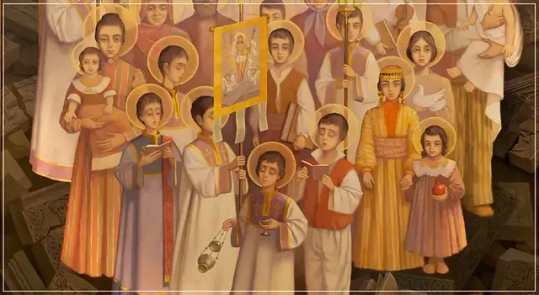
The Icon of Holy Martyrs of the Armenian Genocide
More Saints of the Day April 19
St. Alphege
St. Alphege of Canterbury
St. Crescentius
St. Emma
St. Expeditus
St. Gerold
St. Hermogenes
Bl. James Duckett
St. . Anthony Pavoni
St. Timon
St. Ursmar
St. Vincent of Collioure
#catholic#saints#blessed#martyrs#pray for us#holy martyrs of armenian genocide#iconography#moresaintsoftheday
3 notes
·
View notes
Photo

Saint Gregory of Narek
Doctor of the Church
c.950 - c.1005
Feast Day: February 27 (Roman Rite) October 13 (Armenian Rite)
Saint Gregory of Narek, the son of an Armenian Bishop, was raised and lived most of his life in the Monastery of Narekavank in Turkey, teaching, and writing. Gregory was a priest/monk, poet, theologian, mathematician, and scientist. He wrote the Encyclopedia of Prayer for all Nations, that’s considered a classic in Armenian literature. The Book of Lamentations, his masterpiece, was completed just before he died at age 90. Today he’s known as “the Watchful Angel in Human Form” because of the many miracles started with prayer. Pope Francis proclaimed him a Doctor of the Church in 2015.
{website}
41 notes
·
View notes
Text

Armenian Catholic priests in front of their chapel, Angora, December 25, 1922. Albert Kahn's Archives of The Planet.
#armenia#armenian#armenianblog#albert kahn#autochrome#armenian catholic church#catholic#the kids r most likely orphans
57 notes
·
View notes
Text
Non-Roman Catholics are so cool. Shout out to Armenian Catholics.
45 notes
·
View notes
Text
So apparently the actual authentic tradition of the Church, as recorded in Aquinas, is that being raped during a persecution not only does not rule out a person (such as St. Lucy, who was confined in a brothel and suffered violations there) being a virgin martyr, but actually confirms them as one since the rape is one of the torments they endure rather than recant Christianity. (This of course applies to other rapes too, but “vowed virginity and refused a suitor, was denounced as a Christian” is a whole category of early martyr so that’s the context theologians traditionally discuss it in.)
As Augustine also says, virginity is only a virtue in the soul, not in the body: good things in the body are just health and wellbeing, not virtues. His particular image is useful, namely, “If a midwife, ascertaining a girl’s hymen [as was sometimes done with Roman maidens before their marriages], damages it through malice or clumsiness, is anyone really such a fool as to say the poor girl is no longer a virgin in any way that matters? Or if a nun decides to betray her oath to God and lie with a lover, does anyone really think that, once she has decided to break her vow, she is really still a holy virgin till the actual moment of copulation?”
This needs to be preached much more consistently: the virginity of the holy martyrs is preserved not by miracles preventing them being violated, as in many traditional, mythologized accounts (influenced by pagan Roman assumptions about “purity”), but in the fact that the violation does not matter to their virginity (nor to the faithfulness of married people who are raped). Yes even if it’s coercion or threats, “forced consent”, rather than being physically overpowered—Lucretia, the very type of the innocent rape victim to Roman culture, was threatened by Sextus Tarquinius, not physically subdued.
#catholic#this was extremely helpful to read after reading about the armenian genocide#all the turks did was prove their own inferiority#tw rape#tw genocide
7 notes
·
View notes
Text
Merry Christmas to all those who celebrate ❤️🌠🎁
#my family celebrates 3 Christmasses lol#catholic armenian and orthodox#wishing you love and happiness!!
8 notes
·
View notes
Text
Just thought I’d post this article.
Feel free to reblog this.
#personal stuff#political crap#armenian genocide remembrance day#armenia#armenian genocide#lebanon#beirut#assyrians#assyrian#assyria#sayfo#reblog this#Syriac Christianity#Syriac Catholic Church#Armenian Catholic Church#genocide
1 note
·
View note
Text
for the record i was raised catholic and also have attended a bunch of armenian orthodox services and i can confirm that the latter are way more deadass about their censers. one of the coolest and also funniest things ive ever seen is watching an 80yo priest wearing bright blue and yellow wizard robes shuffle down the aisle pretty slowly while his right arm was almost a blur with furiously he was cranking the censer back and forth. and it wasn't random, he was hitting this specific rhythm that sorta threw it forward before snapping it back. also it looked like this and was covered in bells

and the robes looked kind of like this with the really intricate pattern over everything + popped collar

just ridiculous levels of drip. not to go "JUST LIKE BIDEOGAEM" but it does feel like eastern/armenian orthodox priests were the ones that inspired early RPG designers to establish Priest as a fantasy class
515 notes
·
View notes
Text
what Is fair to say about american christians is that while many of them have very big persecution complexes, constantly going on about how "christianity in america is being attacked" by whatever (the catholics are frankly rly the only ones with a right to complain abt christian treatment in america), they Do Not Care when christians around the world Are Actually Being horribly opressed: ie palestinian christians and armenian christians among others; in part due to american centrism, racism, and the lack of acknowledging even of orthodox christians and sometimes even catholics as christians
their lack of outrage at the systemic murder of two of the worlds oldest christian communities is very telling
531 notes
·
View notes
Photo
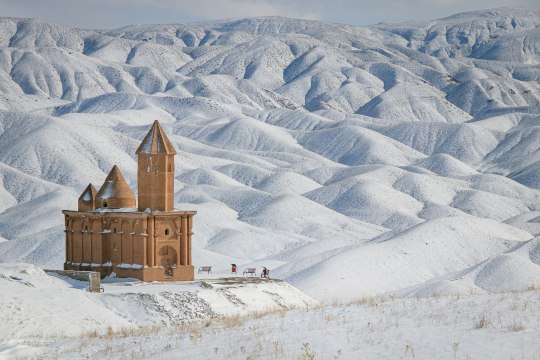
Saint John Church of Sohrol is a 5th- or 6th-century Armenian Catholic church in Sohrol, Shabestar, Iran, 2021 - by Farzin Izaddoust Dar, Iranian/Turkish
1K notes
·
View notes
Text
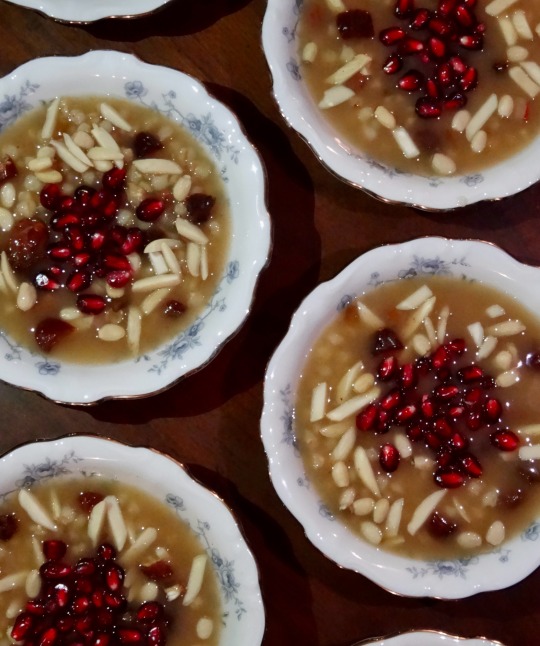
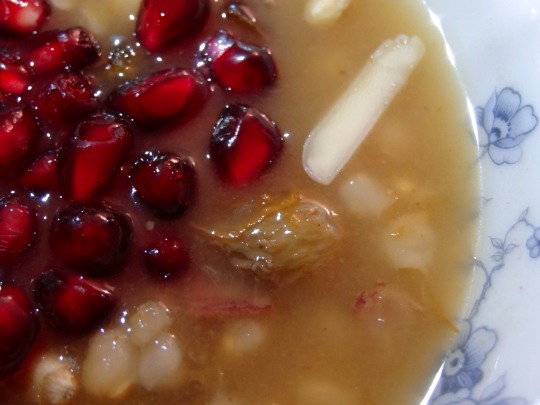
[ID: First image shows four small porcelain bowls of a pudding topped with slivered almonds and pomegranates seeds, seen from above. Second image is an extreme close-up showing the blue floral pattern on the china, slivered almonds, golden raisins, and pomegranate seeds on top of part of the pudding. End ID]
անուշապուր / Anush apur (Armenian wheat dessert)
Anush apur is a sweet boiled wheat pudding, enriched with nuts and dried fruits, that is eaten by Armenians to celebrate special occasions. One legend associates the dish with Noah's Ark: standing on Mt. Ararat (Արարատ լեռը) and seeing the rainbow of God's covenant with humanity, Noah wished to celebrate, and called for a stew to be prepared; because the Ark's stores were diminishing, the stew had to be made with small amounts of many different ingredients.
The consumption of boiled grains is of ancient origin throughout the Levant and elsewhere in West Asia, and so variations of this dish are widespread. The Armenian term is from "անուշ" ("anush") "sweet" + "ապուր" ("apur") "soup," but closely related dishes (or, arguably, versions of the same dish) have many different, overlapping names.
In Arabic, an enriched wheat pudding may be known as "سْنَينِيّة" ("snaynīyya"), presumably from "سِنّ" "sinn" "tooth" and related to the tradition of serving it on the occasion of an infant's teething; "قَمْح مَسْلُوق" ("qamḥ masluq"), "boiled wheat"; or "سَلِيقَة" ("salīqa") or "سَلِيقَة القَمْح" ("salīqa al-qamḥ"), "stew" or "wheat stew," from "سَلَقَ" "salaqa" "to boil." Though these dishes are often related to celebrations and happy occasions, in some places they retain an ancient association with death and funerary rites: qamh masluq is often served at funerals in the Christian town of بَيْت جَالَا ("bayt jālā," Beit Jala, near Bethlehem).
A Lebanese iteration, often made with milk rather than water, is known as "قَمْحِيَّة" ("qamḥīyya," from "qamḥ" "wheat" + "ـِيَّة" "iyya," noun suffix).
A similar dish is known as "بُرْبَارَة" ("burbāra") by Palestinian and Jordanian Christians when eaten to celebrate the feast of Saint Barbara, which falls on the 4th of December (compare Greek "βαρβάρα" "varvára"). It may be garnished with sugar-coated chickpeas and small, brightly colored fennel candies in addition to the expected dried fruits and nuts.
In Turkish it is "aşure," from the Arabic "عَاشُوْرَاء" ("'āshūrā"), itself from "عَاشِر" ("'āshir") "tenth"—because it is often served on the tenth day of the month of ٱلْمُحَرَّم ("muḥarram"), to commemorate Gabriel's teaching Adam and Eve how to farm wheat; Noah's disembarkment from the Ark; Moses' parting of the Red Sea; and the killing of the prophet الْحُسَيْن بْنِ عَلِي (Husayn ibn 'Ali), all of which took place on this day in the Islamic calendar. Here it also includes various types of beans and chickpeas. There is also "diş buğdayı," "tooth wheat" (compare "snayniyya").
These dishes, as well as slight variations in add-ins, have varying consistencies. At one extreme, koliva (Greek: "κόλλυβα"; Serbian: "Кољиво"; Bulgarian: "Кутя"; Romanian: "colivă"; Georgian: "კოლიო") is made from wheat that has been boiled and then strained to remove the boiling water; at the other, Armenian anush apur is usually made thin, and cools to a jelly-like consistency.
Anush apur is eaten to celebrate occasions including New Year's Eve, Easter, and Christmas. In Palestine, Christmas is celebrated by members of the Armenian Apostolic church from the evening of December 24th to the day of December 25th by the old Julian calendar (January 6th–7th, according to the new Gregorian calendar); Armenian Catholics celebrate on December 24th and 25th by the Gregorian calendar. Families will make large batches of anush apur and exchange bowls with their neighbors and friends.
The history of Armenians in Palestine is deeply interwoven with the history of Palestinian Christianity. Armenian Christian pilgrimages to holy sites in Palestine date back to the 4th century A.D., and permanent Armenian monastic communities have existed in Jerusalem since the 6th century. This enduring presence, bolstered by subsequent waves of immigration which have increased and changed the character of the Armenian population in Palestine in the intervening centuries, has produced a rich history of mutual influence between Armenian and Palestinian food cultures.
In the centuries following the establishment of the monasteries, communities of Armenian laypeople arose and grew, centered around Jerusalem's Վանք Հայոց Սրբոց Յակոբեանց ("vank hayots surbots yakobeants"; Monastery of St. James) (Arabic: دَيْر مَار يَعْقُوب "dayr mār ya'qūb"). Some of these laypeople were descended from the earlier pilgrims. By the end of the 11th century, what is now called the Armenian Quarter—an area covering about a sixth of the Old City of Jerusalem, to the southwest—had largely attained its present boundaries.
Throughout the 16th and 17th centuries, the Patriarchate in Jerusalem came to have direct administrative authority over Armenian Christians across Palestine, Lebanon, Egypt, and Cyprus, and was an important figure in Christian leadership and management of holy sites in Jerusalem (alongside the Greek Orthodox and Roman Catholic churches). By the middle of the 19th century, a small population of Armenian Catholics had joined the larger Armenian Apostolic community as permanent residents in Jerusalem, living throughout the Muslim Quarter (but mostly in a concentrated enclave in the southwest); in the beginning of the 20th century, there were between 2,000 and 3,000 Armenians of both churches in Palestine, a plurality of whom (1,200) lived in Jerusalem.
The Turkish genocide of Armenians beginning in 1915 caused significant increases in the populations of Armenian enclaves in Palestine. The Armenian population in Jerusalem grew from 1,500 to 5,000 between the years of 1918 and 1922; over the next 3 years, the total number of Armenians in Palestine (according to Patriarchate data) would grow to 15,000. More than 800 children were taken into Armenian orphanages in Jerusalem; students from the destroyed Չարխափան Սուրբ Աստվածածին վանք (Charkhapan Surb Astvatsatsin Monastery) and theological seminary in Armash, Armenia were brought to the Jerusalem Seminary. The population of Armenian Catholics in the Muslim Quarter also increased during the first half of the 20th century as immigrants from Cilicia and elsewhere arrived.
The immediate importance of feeding and housing the refugees despite a new lack of donations from Armenian pilgrims, who had stopped coming during WW1—as well as the fact that the established Armenian-Palestinians were now outnumbered by recent immigrants who largely did not share their reformist views—disrupted efforts on the part of lay communities and some priests to give Armenian laypeople a say in church governance.
The British Mandate, under which Britain assumed political and military control of Palestine from 1923–1948, would further decrease the Armenian lay community's voice in Jerusalem (removing, for example, their say in elections of new church Patriarchs). The British knew that the indigenous population would be easier to control if they were politically and socially divided into their separate religious groups and subjected to the authority of their various religious hierarchies, rather than having direct political representation in government; they also took advantage of the fact that the ecclesiastical orders of several Palestinian Christian sects (including the Armenian Patriarchate of Jerusalem) comprised people from outside of Palestine, who identified with religious hierarchy and the British authorities more than they identified with the Palestinian lay communities.
British policy, as well as alienating Armenians from politics affecting their communities, isolated them from Arab Palestinians. Though the previously extant Armenian community (called "քաղաքացի" "kaghakatsi," "city-dwellers") were thoroughly integrated with the Arab Palestinians in the 1920s, speaking Arabic and Arabic-accented Armenian and eating Palestinian foods, the newer arrivals (called "زُوَّار" / "զուվվար" "zuwwar," "visitors") were unfamiliar with Palestinian cuisine and customs, and spoke only Armenian and/or Turkish. Thus British policies, which differentiated people based on status as "Arab" (Muslim and Christian) versus "Jewish," left new Armenian immigrants, who did not identify as Arab, disconnected from the issues that concerned most Palestinians. They were predominantly interested in preserving Armenian culture, and more concerned with the politics of the Armenian diaspora than with local ones.
Despite these challenges, the Armenian Patriarchate of Jerusalem came to be a vital center of religious and secular culture for the Armenian diaspora during the British Mandate years. In 1929, Patriarch Yeghishe Turian reëstablished the Սուրբ Յակոբեանց Տպարան ("surbots yakobeants taparan"; St. James printing house); the Patriarchate housed important archives relating to the history of the Armenian people; pilgrimages of Armenians from Syria, Lebanon, and Egypt increased and the economy improved, attracting Armenian immigrants in higher numbers; Armenians held secular roles in governance, policing, and business, and founded social, religious, and educational organizations and institutions; Armenians in the Old and New Cities of Jerusalem were able to send financial aid to Armenian victims of a 1933 earthquake in Beirut, and to Armenians expelled in 1939 when Turkey annexed Alexandretta.
The situation would decline rapidly after the 1947 UN partition resolution gave Zionists tacit permission to expel Palestinians from broad swathes of Palestine. Jerusalem, intended by the plan to be a "corpus separatum" under international administration, was in fact subjected to a months-long war that ended with its being divided into western (Israeli) and eastern (Palestinian) sections. The Armenian population of Palestine began to decline; already, 1947 saw 1,500 Armenians resettled in Soviet Armenia. The Armenian populations in Yafa and Haifa would fall yet more significantly.
Still, the Armenian Patriarchate of Jerusalem maintained its role as the center of Armenian life in Palestine; the compound provided food and shelter to thousands of Armenians during the Battle for Jerusalem and the Nakba (which began in 1948). Some Armenians formed a militia to defend the Armenian Quarter against Haganah shelling during the battle.
In the following years, historical British contributions to the shoring up of insular power in the Patriarchate would cause new problems. The Armenian secular community, no longer empowered to oversee the internal workings of the Patriarchate, could do nothing to prevent embezzling, corruption, and even the sale of church-owned land and buildings to settlers.
In 1967, Israeli military forces annexed East Jerusalem, causing another, albeit smaller, surge in Armenian emigration from the city. Daphne Tsimhoni estimates based on various censuses that the Armenian population of Jerusalem, which had reached 5,000-7,000 at its peak in 1945–6, had fallen back to 1,200 by 1978.
Today, as in the 20th century, Armenians in Jerusalem (who made up nearly 90% of the Armenian population of Palestine as of 1972) are known for the insularity of their community, and for their skill at various crafts. Armenian food culture has been kept alive and well-defined by successive waves of immigrants. As of 2017, the Armenian Patriarchate supplied about 120 people a day with Armenian dishes, including Ղափամա / غاباما "ghapama" (pumpkin stuffed with rice and dried fruits), թոփիկ / توبيك "topig" (chickpea-and-potato dough stuffed with an onion, nut, fruit, and herb filling, often eaten during Lent), and Իչ / ايتش "eetch" (bulgur salad with tomatoes and herbs).
Restaurants lining the streets of the Armenian and Christian quarters serve a mixture of Armenian and Palestinian food. Լահմաջո "lahmadjoun" (meat-topped flatbread), and հարիսա / هريس "harisa" (stew with wheat and lamb) are served alongside ֆալաֆել / فلافل ("falafel") and մուսախան / مسخن ("musakhkhan"). One such restaurant, Taboon Wine Bar, was the site of a settler attack on Armenian diners in January 2023.
Up until 2023, despite fluctuations in population, the Armenian community in Jerusalem had been relatively stable when compared to other Armenian communities and to other quarters of the Old City; the Armenian Quarter had not been subjected to the development projects to which other quarters had been subjected. However, a deal which the Armenian Patriarchate had secretly and unilaterally made with Israel real estate developer Danny Rotham in 2021 to lease land and buildings (including family homes) in the Quarter led Jordan and Palestine to suspend their recognition of the Patriarch in May of 2023.
On 26th October, the Patriarchate announced that it was cancelling the leasing deal. Later the same day, Israeli bulldozers tore up pavement and part of a wall in حديقة البقر ("ḥadīqa al-baqar"; Cows' Garden; Armenian: "Կովերի այգու"), the planned site of a new luxury hotel. On 5th November, Rothman and other representatives of Xana Gardens arrived with 15 settlers—some of them with guns and attack dogs—and told local Armenians to leave. About 200 Armenian Palestinians arrived and forced the settlers to stand down.
On 12th and 13th November, the developer again arrived with bulldozers and attempted to continue demolition. In response, Armenian Palestinians have executed constant sit-ins, faced off against bulldozers, and set up barricades to prevent further destruction. The Israeli occupation police backed settlers on another incursion on 15th November, ordering Armenian residents to vacate the land and arresting three.
On December 28th, a group of Armenian bishops, priests, deacons, and seminary students (including Bishop Koryoun Baghdasaryan, the director of the Patriarchate's real estate department) were attacked by a group of more than 30 people armed with sticks and tear gas. The Patriarchate attributed this attack to Israeli real estate interests trying to intimidate the Patriarchate into abandoning their attempt to reverse the lease through the court system. Meanwhile, anti-Armenian hate crimes (including spitting on priests) had noticeably increased for the year of 2023.
These events in Palestine come immediately after the ethnic cleansing of Լեռնային Ղարաբաղ ("Lernayin Gharabagh"; Nagorno-Karabakh); Israel supplied exploding drones, long-range missiles, and rocket launchers to help Azerbaijan force nearly 120,000 Armenians out of the historically Armenian territory in September of 2023 (Azerbaijan receives about 70% of its weapons from Israel, and supplies about 40% of Israel's oil).
Support Palestinian resistance by donating to Palestine Action’s bail fund; buying an e-sim for distribution in Gaza; or donating to help a family leave Gaza.
Ingredients
180g (1 cup) pearled wheat (قمح مقشور / խոշոր ձաւար), soaked overnight
3 cups water
180-360g (a scant cup - 1 3/4 cup) sugar, or to taste
Honey or agave nectar (optional)
1 cup total diced dried apricots, prunes, golden raisins, dried figs
1 cup total chopped walnuts, almonds, pistachios
1 tsp rosewater (optional)
Ceylon cinnamon (դարչին) or cassia cinnamon (կասիա)
Aniseed (անիսոն) (optional)
Large pinch of salt
Pomegranate seeds, to top (optional)
A Palestinian version of this dish may add pine nuts and ground fennel.
Pearled wheat is whole wheat berry that has gone through a "pearling" process to remove the bran. It can be found sold as "pearled wheat" or "haleem wheat" in a halal grocery store, or a store specializing in South Asian produce.
Amounts of sugar called for in Armenian recipes range from none (honey is stirred into the dish after cooking) to twice the amount of wheat by weight. If you want to add less sugar than is called for here, cook down to a thicker consistency than called for (as the sugar will not be able to thicken the pudding as much).
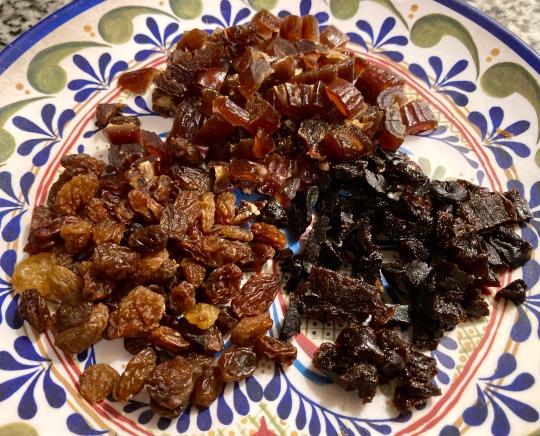
Instructions
1. Submerge wheat in water and scrub between your hands to clean and remove excess starch. Drain and cover by a couple inches with hot water. Cover and leave overnight.
2. Drain wheat and add to a large pot. Add water to cover and simmer for about 30 minutes until softened, stirring and adding more hot water as necessary.

Wheat before cooking
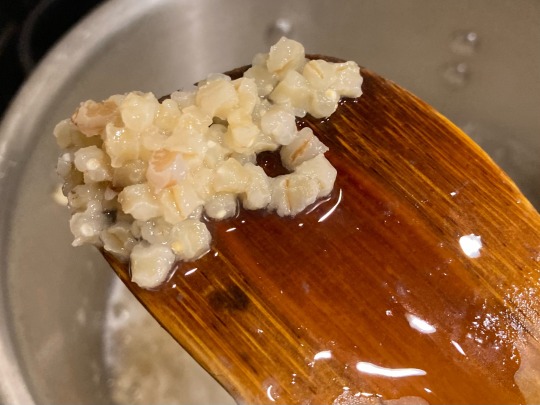
Wheat after cooking
3. Add dried fruit, sugar, salt, and spices and simmer for another 30 minutes, stirring occasionally, until wheat is very tender. Add water as necessary; the pudding should be relatively thin, but still able to coat the back of a spoon.
4. Remove from heat and stir in rosewater and honey. Ladle pudding into individual serving bowls and let cool in the refrigerator. Serve cold decorated with nuts and pomegranate seeds.
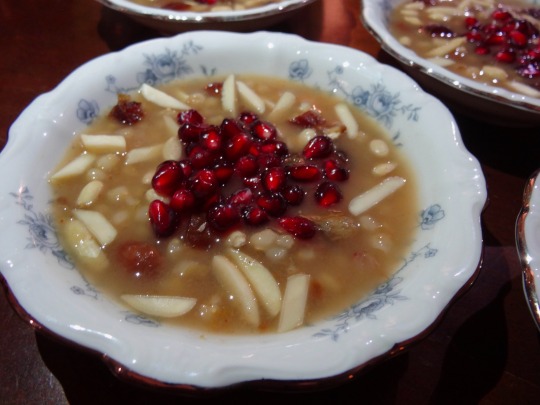
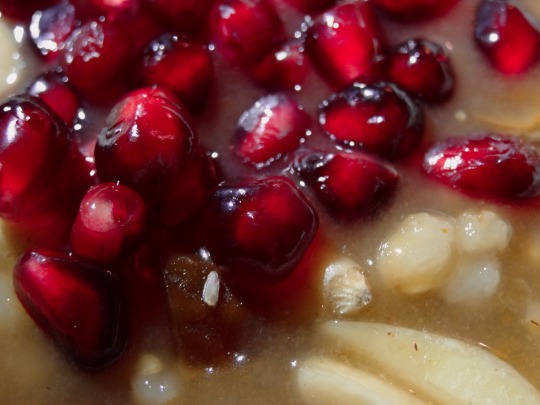
#the last link is a different / new fundraiser#Armenian#Palestinian#fusion#wheat berries#pearled wheats#pomegranate#prunes#dried apricot#dates#long post /
364 notes
·
View notes
Photo
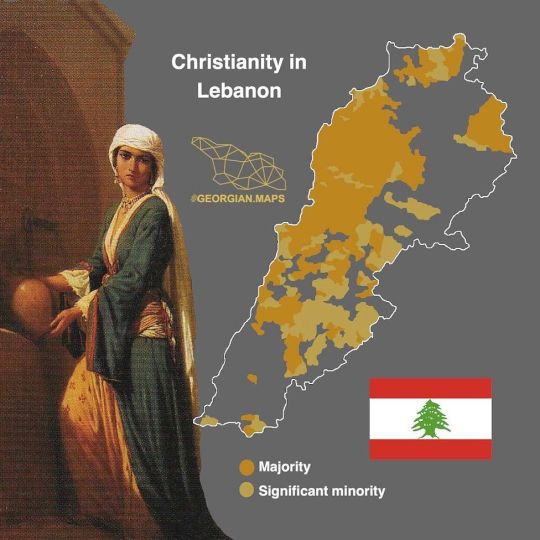
Christianity in Lebanon.
Maronite Catholic 52.5%
Greek Orthodox 20%
Melkite Catholic 12.5%
Armenian Orthodox 10%
Protestants 2.5%
other Christians 2.5%
by georgianmaps
145 notes
·
View notes
Text

God, I'm sorry this has been sitting in the old blog's box for like 3 months. It comes down to taking cues from canon and adapting them so they satisfy me. I think most people follow the adage "write what you know" and supplement it with research and headcanons, and the same applies to me.
I write the America I know. Alfred very much represents what the eagle on our seal holds. The olive branch of opportunity and idealism. And the arrows of imperialism and aggression. It's a very dual image in my head. My America is the America of civic duty and union membership but also overseas subjugation and internal horror. I can't separate Alfred from the good and the bad I know. But while I spent roughly 40% of my life living in the US, it was never around-born Americans. I was born and raised in a large city where most of the people my parents knew, and I made friends with weren't even native English speakers. The Catholic churches had Irish names and Spanish services. More people on my block spoke native Armenian, Arabic, and Brazilian Portuguese than they did English. Small-town and suburban America with no public transportation and evangelicals isn't something I've ever experienced without a sense of immediately being known as an outsider, nor am I particularly attached to it. It's an inherent part of the American experience for many people, but it wasn't for me until adulthood, so I sidestep it.
I write America as the place that puts people in the sky and sends its soldiers where they shouldn't be. The America of trams, inventors, artists, engineers, and dreamers. The America of our heroes and the industrial-military complex. The America of unions and activism was born of incompetency, capitalism, and cruelty. Alfred is an idealist. He struggles with any killing he can see and has boiled over with a sense of burning injustice that has never let go of his heart but nonetheless brought humanity's ability to destroy itself to a screaming crescendo. He is Atlas with the world on his shoulders and the ability to break it. He is Perseus, who plunged his hand into the sun and stole the fire of the gods for his own ambition. He is the American Icarus who skimmed the surface of the sun but that still flies unscathed. He is made of everything to love and everything to loath.
123 notes
·
View notes
Text
https://www.washingtonpost.com/world/2023/11/29/palestinian-christians-christmas-ceasefire-cancel/
On Tuesday afternoon, the delegation went to the White House and delivered a letter for President Biden signed by the leaders of the Christian community in Bethlehem, including Isaac’s Protestant denomination and his Orthodox, Armenian and Catholic counterparts. They also went to the Hill to meet staff in the Senate and House of Representatives.
“God has placed political leaders in a position of power so that they can bring justice, support those who suffer, and be instruments of God’s peace,” reads the letter, which I got to see in advance of its delivery. “We want a constant and comprehensive cease-fire. Enough death. Enough destruction. This is a moral obligation. There must be other ways. This is our call and prayer this Christmas.” […]
When Isaac returns to Bethlehem at the end of the week for the start of the Advent season, he and his colleagues intend to set up a small Nativity scene with rocks and debris piled atop it. “This is what Christmas now means to us that we see Jesus being born among those who have lost everything, who are under the rubble,” Isaac said.
16 notes
·
View notes